Pancreatitis is a fairly common disease that can be successfully treated, the main thing is to equip yourself with the necessary knowledge about what is useful and what leads to a worsening of the condition. A specially selected diet for pancreatitis of the pancreas provides significant help in the treatment.
What can not, and on the contrary, it is very useful to consume, in what quantity and under what conditions, as well as other important information, you can find out from this article.
What is pancreatitis
Pancreatitis is a painful condition of the pancreas in which its functions are impaired.. The juice secreted by this organ has a destructive effect on the gland itself, consuming its tissue. It is quite an unpleasant and unsafe condition. It can occur in a severe acute or milder chronic form and can have different consequences depending on the severity.
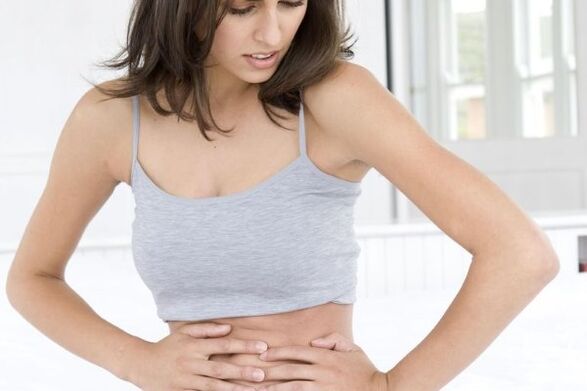
In the vast majority of cases, pancreatic problems are associated with excessive alcohol consumption, overeating, dependence on fatty, salty, smoked foods and the willingness to follow a reasonable diet. At the same time, a person may not realize that he is suffering from pancreatitis for a long time, and he can no longer lead his former lifestyle, but he must take care of his health.
What factors influence the development of the disease:
- viruses and bacteria;
- fungal infection;
- pancreatic injuries;
- helminth infection;
- infectious diseases;
- surgical intervention;
- diseases of the gallbladder or its ducts;
- taking certain medications (diuretics, estrogens, etc. ).
The disease is attacked by severe pain in the abdomen, stomach and from the right side to the spine.. Such crises can last for several hours, accompanied by nausea, vomiting, severe pain and general malaise. This condition requires urgent medical intervention to prevent complications.
What foods are possible and which are not for the treatment of pancreatitis?
The pancreas is designed to produce what's called pancreatic juice, which is made up of hormones and enzymes needed to break down proteins, fats, carbohydrates—everything you eat every day. If the synthesis of these substances is impaired, if there is inflammation and swelling of the channel, stagnation of fluid will inevitably occur, which leads to disruption of the functioning of the organ.
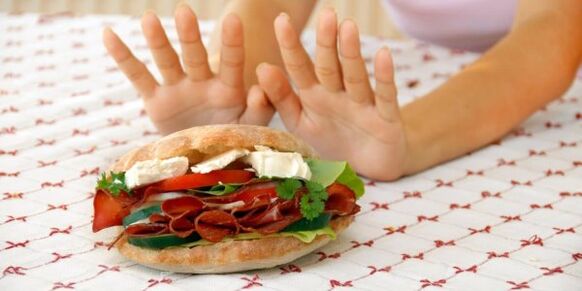
What diet is recommended for pancreatitis of the pancreas, what foods are allowed and what are not, you need to know in order to maintain health. The vessels are selected so as not to overload the inflamed gland.They should be nutritious, rich in protein, but easily digestible.
Authorized products
The following products are allowed:
- Bread or rolls made from premium wheat flour (fresh bread is not recommended, yesterday's bread is better), crackers, unsalted crackers.
- First courses with vegetables, such as zucchini, pumpkin, potatoes. Vegetables can also be pureed, and cereals can be cooked until pureed.
- Meat. All dietary varieties are suitable: rabbit, chicken or turkey. Before cooking, remove the skin from the meat, cut off all the skin and tendons and boil well. The meat is then ground into small pieces or pate.
- Fish. Lean varieties are best, such as haddock, cod, whiting. We can cook fish soup or slices, pâtés, aspic.
- Porridge from the most common cereals is boiled until viscous. Make porridge or casserole with skimmed milk or just water.
- Milk, fermented baked milk, Varenets, cottage cheese and other similar low- or zero-fat products.
- Omelet cooked in a pan without oil from fresh chicken or quail eggs - no more than 2 times a week.
- Vegetables – fried, boiled, fried or steamed without oil.
- Fruits – any fruit that does not irritate the stomach in its natural form or when cooked.
- Oil can be added in small quantities to already prepared dishes without heat treatment (you can use butter or any vegetable oil).
- Liquids - still mineral water, weakly brewed tea, compotes, natural fruit juices diluted in half with water, infusions of herbs with anti-inflammatory properties.
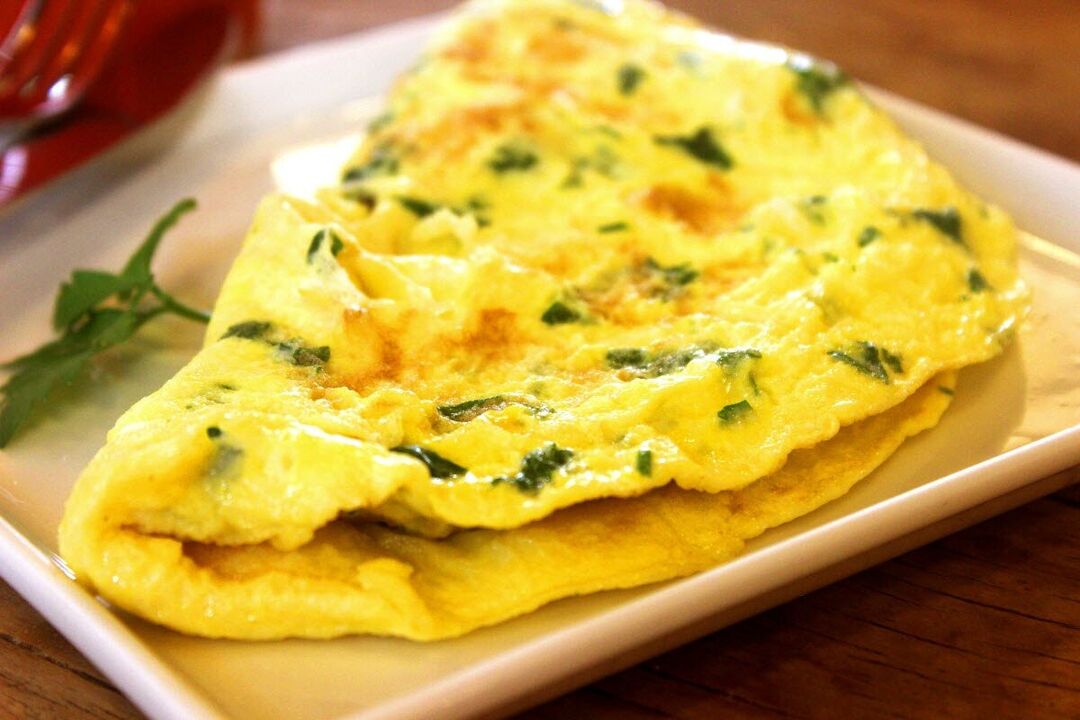
Prohibited products
In order not to cause a sharp aggravation of the condition, you need to consider what the diet should be for pancreatitis of the pancreas.
In the list, we list what you should not eat and what foods to avoid:
- You should refrain from sausages, deep-fried meats and dishes made from them, and strong meat, mushroom and fish soups.
- Avoid cakes, pastries, waffles and pastries during an exacerbation.
- Do not eat fatty, salted or smoked fish and canned fish.
- Cheese and sour cream should also be avoided.
- The use of pearl barley, barley and other coarse and hard-to-digest cereals is not recommended.
- Any food fried or steamed in oil is prohibited.
- Vegetables such as daikon, turnips, radishes, radishes, cabbage, peppers, onions and garlic contribute to the exacerbation of the disease.
- Ice cream, dark chocolate, preserves or jams, figs, dried apricots, dates, prunes and other similar products should be forgotten during the illness.
- It is unacceptable to eat food with hot spices, artificial colors or monosodium glutamate.
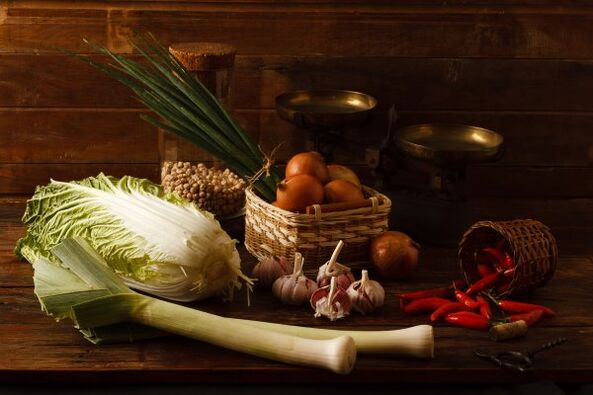
The temperature of the prepared food is important - it should not be too hot or too cold.
Use of spices, herbs and spices
Any spice improves the taste of food and makes it more aromatic, but when it comes to pancreatitis, spices can negatively affect the patient's condition. You should stop using mustard, vinegar, horseradish, garlic and onions.Any spicy seasoning can cause severe aggravation. Even salt should be limited, in minimal quantities, and it is better to buy sea salt and add it to a ready-made dish - this way it preserves useful minerals.
Doctors allow ready meals to be flavored with caraway seeds, basil, parsley and dill.. You can also use saffron and oregano. Vanillin can be added to desserts. Turmeric occupies a special place in the list of spices. This spice has antioxidant properties, contains very beneficial essential oils, improves digestion, and has anti-inflammatory and anti-cancer effects.
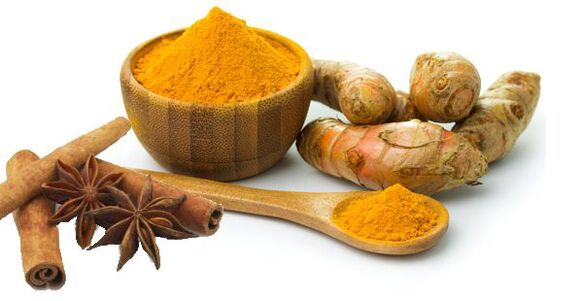
Another beneficial substance is cinnamon.It helps normalize blood sugar levels and restore impaired digestion. Even the smallest amount of cinnamon can increase glucose absorption by 20 times, which is truly invaluable for those with reduced carbohydrate tolerance.
Turmeric and cinnamon are beneficial for pancreatitis and support the body.
The use of cinnamon will have a positive effect on the well-being of any person suffering from pancreatitis.
Duration of diet for pancreatitis
Let's take a closer look at the duration of the diet and what is not allowed in case of pancreatitis of the pancreas.
In case of an acute attack, it is recommended to refrain from eating for 1-3 days. Drink clean water or still mineral water in small portions. To relieve the symptoms of the disease, cold is applied to the inflamed area. You can use ice water or a heating pad filled with ice.
In the acute stage, the patient must be provided with bed rest and complete rest, because any noise, stress or nervous tension negatively affects the patient's condition.

Every day, without exacerbations, it is necessary to follow the diet recommended for pancreatitis of the pancreas, taking into account what can be eaten and what cannot be eaten. This diet regimen is usually recommended for a period of 3 weeks to a month.
During this period, you can eat the following foods:
- soups with vegetable broth;
- viscous, lightly sweetened porridge cooked to a puree;
- steamed vegetables, egg white omelette;
- not too strong tea, rosehip and dried fruit compote;
- freshly squeezed juices diluted in half with water.
Furthermore, in the case of a chronic course of the disease, it is advisable to continuously use a gentle diet. This is necessary in order to prevent acute conditions that threaten serious consequences. Careful attention to this problem allows you to avoid damage to organs such as the liver, stomach, intestines, whose activity is related to the pancreas.
Consequences of improper nutrition
It is important to remember that the diet prescribed for pancreatitis of the pancreas should not be violated. The consequences can be very dangerous.
There is a risk of developing very harmful consequences:
- stagnation of bile causes jaundice;
- perforations and bleeding are possible;
- there is a high probability of stomach ulcer;
- diseases of the esophagus often occur;
- the risk of developing liver hypertension;
- portal or splenic vein thrombosis;
- high probability of developing pleurisy;
- duodenal disease;
- pancreatic tumors;
- risk of developing diabetes.

Approximate diet menu for pancreatitis of the pancreas: recipes
Cream soup
Ingredients:
- Bulk cheese for soup - 1 pc.
- Broccoli heads - 200 g
- chicken breast - 150 g
- carrot - 100 g
- Biscuits - 1 tbsp. l.
- Salt to taste
Place the chicken in a pan with water, salt to taste and cook completely. Add the carrots and broccoli and cook for about 20 minutes. At the end, add bulk or other mild cheese to the pot, bring to a boil and let the soup simmer. Blend the soup in a blender and sprinkle with croutons when serving.
Fish salad
Ingredients:
- 1 tablespoon. l. green peas
- 1 tablespoon. l. boiled carrots
- 1 tablespoon. l. low-fat cottage cheese
- sea fish fillet - 60 g
- boiled potatoes - 30 g
- boiled beets - 30 g
Cut the fish fillet and vegetables into small cubes, add a little salt, season with sour cream, garnish with herbs to taste - the diet salad is ready.
Diet cottage cheese casserole and vermicelli
Ingredients:
- vermicelli - 1 cup
- milk - half a cup
- cottage cheese - half a cup
- fresh egg - 1 pc.
- sugar - 1-2 tbsp. l.
- salt - 0. 5 tsp.
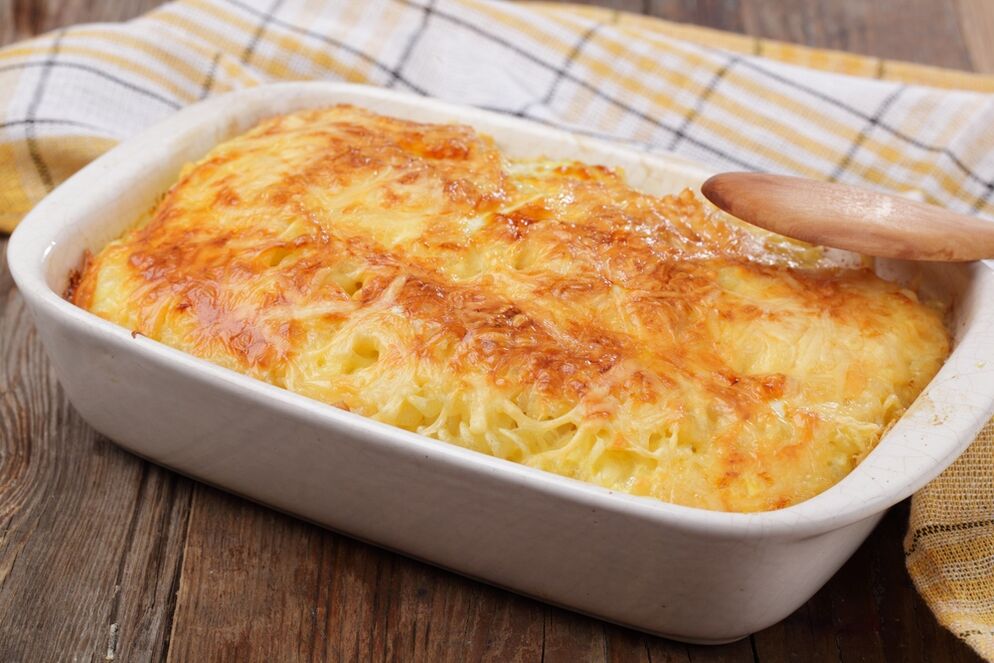
Boil the vermicelli, cool it down a little, add the cottage cheese, eggs beaten with milk, sugar and salt, mix and put in the mold. Bake in the oven until golden brown.
Cereal and pumpkin porridge
Ingredients:
- Boiled pumpkin - 300 g
- Boiled rice - 300 g
- Milk - 200 g
- Sugar - 5 tablespoons.
- Salt - 1 teaspoon.
Grind all the hot ingredients into a puree and beat a little - the porridge is ready.
Fruit cake
Ingredients:
- banana - 2 pcs.
- peach - 2 pcs.
- apple - 2 pcs.
- berries - a handful
- yogurt - 200 g
- cookies
- gelatin
Dilute the gelatin in water according to the recipe on the package. Gradually add the yogurt to the resulting jelly and mix until smooth. Put cookies on the bottom of the mold - this is the first layer, then a layer of jelly, and the third layer is fruit puree. Then add the jelly and fruit again. There is another layer of cookies on top. Decorate the cake with fruit rings and top with any berries. Put the cake in the fridge, once it has set, you can eat it.
Nutritional characteristics
The most important thing is to follow the prescribed diet. Products and foods with this diagnosis are selected very carefully.Products should be well boiled or steamed. Coarse foods should be pureed or chopped. Do not drink hot or very chilled soups, cereals and drinks that irritate the stomach. In order to avoid overfilling the stomach, it is recommended to use split meals.
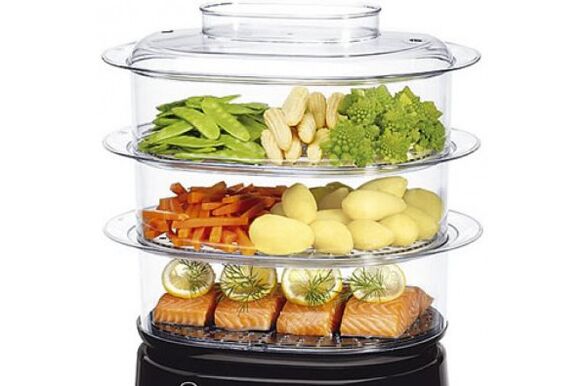
It is important not to overload the digestive system, observing the consumption ratio: fats - no more than 70-80 g, carbohydrates - 350 g, proteins - 60-100 g. Eat food in small portions, slowly, slowly, chewing every bit. .
Do not drink while eating.
Since the liquid dilutes the gastric juice, it worsens digestion.
You should completely avoid oversalted, fried and smoked foods and exclude carbonated drinks. Alcohol consumption is not allowed. Canned foods are not beneficial for this disease.Cakes, muffins, sweets, hot or spicy food are strictly unacceptable in case of pancreatitis.
Broth is allowed in the stage of stable remission, only chicken or turkey, and the first broth should be drained. Before consumption, grind the meat to a paste in a blender.
Symptoms of pancreatitis
Pancreatitis is a serious and sometimes life-threatening condition, so it is important to know its symptoms so that you can start the right treatment without delay.The earliest sign of the disease is pain in the stomach area, on the right side under the ribs or pain in the belt.

It can be painful, stabbing, throbbing or otherwise. The pain is most often caused by foods that are too fatty, fried, too salty, spicy or smoked. The pain can be so severe that it cannot be relieved even with medication.
Another manifestation may be heartburn, belching, a sharp rise in temperature, intestinal dysfunction - diarrhea or constipation, while the stool often has an unnaturally oily appearance.Severe vomiting or nausea may occur. From the cardiovascular system - heart rhythm disturbances, feeling of lack of air.
What are the signs of pancreatitis:
- stool disorder;
- nausea;
- high fever;
- pain in the stomach;
- belt pain;
- pain in the stomach;
- bloating in the abdominal area;
- nausea or vomiting;
- sudden weight loss;
- month;
- weakness, helplessness.

Pancreatitis can be treated surgically or conservatively. Compliance with nutritional rules plays an important role in treatment. A diet for pancreatitis of the pancreas, which is not allowed during the course or exacerbation of the disease, and, on the contrary, is recommended, helps to develop a suitable diet, improves health and improves the quality of life.















































































